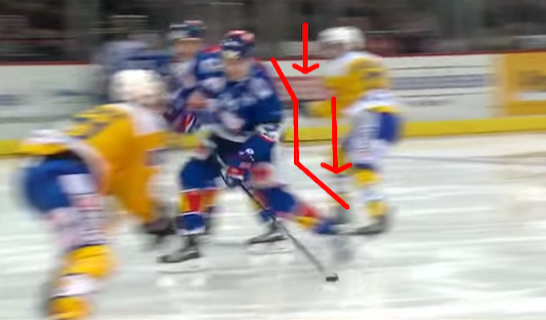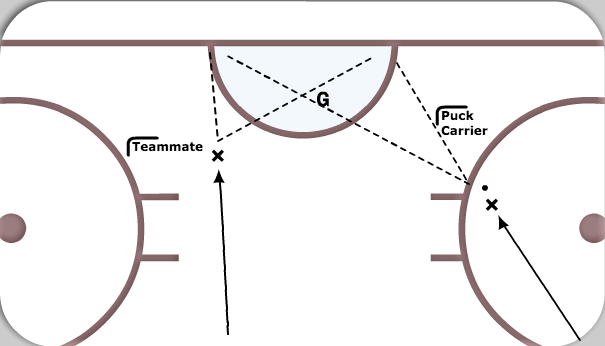When Auston Matthews was drafted first overall and became a Toronto Maple Leaf, the expectations he faced in hockey-mad Toronto seemed unreasonable. Through the first quarter of the season, however, Matthews has not only met those expectations, but in many ways has exceeded them.
Part of the issue is that the media is often guilty of building up the drama of the draft for the purpose of driving ratings and in so doing accords an inflated importance to many young players. For Matthews, this could indeed have been the case, but instead, with the quarter pole of the NHL's season now squarely in the rearview mirror, a picture of a complete player has emerged.
While on some rare occasions, talented 18 and 19-year-olds manage to make a mark at the professional level, it is often in a way that leaves fans hoping for more. The broad strokes are there - speed, stamina, maybe some offensive flair - but the subtler points of the game - patience, conditioning, and defensive play - remain elusive. Matthews already has all of these things in spades and he is far from finished developing. It is worth considering then, some of the many little things that Matthews does so well, and the areas where he still may grow.
Strengths
Shooting
Matthews' wrist shot release is interesting for two reasons. The first is that he shifts his weight to one foot so that his body weight pushes his stick into a deeper arc (see below), thus forcing a greater whip-like action as the shot is fired. The second interesting thing about Matthews' release is that because of the way he shifts his weight as he shoots, the puck is further out in front of his body at its release point relative to many other players.

So why does Matthews score a lot of goals? Well, this is one reason. Why does he have so many shots? Well, when you can shoot like that, your teammates are going to get you the puck more often, and your coach is going to encourage you to shoot as often as possible.
Stickhandling
Sure, Matthews can do fun tricks with the puck, but those are a lot less useful in a game situation than what he does in the gif above. OK, sure, sometimes, but most games this will not happen, even for the world's best players. Speaking of the world's best players, Matthews' stick work is frantic yet efficient, and reminds me of the way Sidney Crosby often handles the puck.
Some of the odd flips and bounces might look like lucky poke checks, but they're not. All those quick taps and corrals of the puck are practiced. Matthews can handle the puck quickly with his head up. Sliding the puck past the first two players looks flashy, but the more impressive move was the beating the third man, Erik Karlsson. Matthews taps Karlsson's stick once to startle him, skates by him, and then taps it again from underneath and takes the puck before Karlsson even has time to put his own stick back on the ice.
Puck Protection
Really, puck protection is a combination of several skills: quick stops and starts, lower body strength and conditioning, close-quarter stickhandling, and having vision enough to know where teammates will be to pass the puck off. Matthews does all of these things well. He's an animal down low.
In the clip above, Matthews has to absorb a hit almost immediately after getting the puck. Here, a quick stop allows him to roll off the check instead of bearing the full brunt of it. Matthews lets the puck get a little further away from his body that he would probably like on two occasions, but his quick crossovers allow him to stay in possession. He tries going up the strong-side boards but two (nearly three) Nashville defenders close in on him. Realizing that Nashville has overloaded one side, he picks up speed, uses the net to angle off his pursuer, and finds open ice to get the puck back to the point.
Driving the Net
The goal Matthews scores in the following example is very similar to the one he got from a Connor McDavid feed during the World Cup of Hockey back in the summer: if you have a talented and speedy teammate coming down the wing with the puck, your job is to go to the far post. Not the middle of the net, the far post. That is where you are most likely to pick up a rebound, and it leaves the shooter the greatest percentage of net to look at once they have the puck.
Below is a diagram showing how a teammate maximizes the net they have to shoot at by skating to the far post. If they skated to the middle of the net, they could only shoot forehanded at half the net.

Image created at hockeyshare
Admittedly, both of the goals referred to here should have been more difficult for Matthews. In both cases, the defencemen should have broken up the pass, and in the one pictured above, there was really no excuse for Adam Larsson not tying up Matthews - it was not an odd-man rush. Still, what is clear is that the Leafs have a player willing to head to the net with speed, and this is already paying off.
Weaknesses
Inconsistent Neutral Zone Pressure
In the Leafs' game against Los Angeles, Matthews was easily the team's best player, but even he had moments of difficulty.
Here, he is seen on the far side of the screen, doing nothing other than weakly tapping the attacking forward with his stick, despite ample time to make his way over to that side of the ice. Ideally, Matthews would have met the rushing King earlier in the neutral zone, angled him off towards the boards, and made a more decisive move just as he hit the blue line, forcing the play offside.
Matthews is not always bad at this, and it should be noted that the Leafs as a team need a lot of work on preventing controlled zone entries, so perhaps coaching is a factor, but this is speculation.
Lapses in Defensive Awareness
Oops. Was that the puck and Anze Kopitar I just skated by?
These brain cramps do happen to young players, and it is worth noting that Matthews has already started doing less of this kind of thing as the season has progressed, but it is nevertheless something he will have to work on. Recognizing who is on the ice an what direction they are moving in is... rather important.
Conclusion and Next Steps
Conclusion
Let's get one thing clear: no reasonable person would say that Auston Matthews' play so far has been anything less than impressive. He came into the league facing what seemed like unreasonable expectations and still managed to look better than anticipated.
Certainly, there remain components of Matthews' game that still need work, but looking at his stats, it becomes clear that he is already a leader on his team, even if he is granted a somewhat sheltered role by Mike Babcock. Jump past the table for the tl;dr version.
| Player | CF60 | CA60 | CF% | xGF% | GF% | SCF% | PDO | PENDIFF |
| WILLIAM NYLANDER | 66.75 | 56.61 | 54.11 | 55.29 | 47.15 | 58.71 | 97.86 | 11 |
| AUSTON MATTHEWS | 66.19 | 57.29 | 53.61 | 55.38 | 47.69 | 57.15 | 97.71 | 7 |
| JAKE GARDINER | 67.9 | 58.75 | 53.61 | 57.16 | 51.34 | 61.89 | 100.12 | -8 |
| MORGAN RIELLY | 69.64 | 61.13 | 53.25 | 55.07 | 46.85 | 57.03 | 96.22 | -1 |
| CONNOR CARRICK | 63.96 | 56.59 | 53.06 | 60.68 | 55.89 | 63.77 | 101.17 | -1 |
| ZACH HYMAN | 68.54 | 61.2 | 52.83 | 56.82 | 49.71 | 59.84 | 98.42 | 8 |
| NAZEM KADRI | 66.85 | 60.86 | 52.35 | 57.07 | 46.46 | 60.46 | 98.25 | -7 |
| LEO KOMAROV | 64.07 | 59.32 | 51.93 | 55.5 | 54.11 | 57.62 | 101.34 | -5 |
| NIKITA ZAITSEV | 63.53 | 59.39 | 51.68 | 52.11 | 45.03 | 51.79 | 97.38 | 4 |
| MARTIN MARINCIN | 63.97 | 61.2 | 51.11 | 55.78 | 44.5 | 59.44 | 100.08 | 6 |
| CONNOR BROWN | 66.54 | 63.79 | 51.06 | 54.66 | 57.45 | 55.73 | 102.16 | -10 |
| JAMES VAN RIEMSDYK | 65.48 | 64.57 | 50.35 | 56.13 | 47.24 | 59.57 | 98.25 | 1 |
| TYLER BOZAK | 64.19 | 64.87 | 49.74 | 55.58 | 50.86 | 60.88 | 100.73 | 4 |
| MITCHELL MARNER | 64.03 | 66.88 | 48.91 | 54.57 | 49.43 | 58.45 | 100.5 | 1 |
| MATT MARTIN | 54.08 | 56.75 | 48.8 | 51.98 | 53.83 | 48.17 | 102.88 | -2 |
| MATT HUNWICK | 52.72 | 61.71 | 46.07 | 55.05 | 57.62 | 54.01 | 104.02 | -3 |
| ROMAN POLAK | 57.09 | 70.39 | 44.78 | 52.59 | 46.37 | 56.92 | 101.66 | -2 |
| BEN SMITH | 48.92 | 64.11 | 43.28 | 48.26 | 40.05 | 46.23 | 101.3 | -2 |
All stats from corsica.hockey and are 5v5, adjusted for score, zone and venue.
Matthews ranks second on the team in CF%, and fourth in CA60, which suggests that he is a rookie who is already quite responsible defensively. His SCF% is middling and his GF% is low, but his PDO is still second lowest on the team, so some helpful regression is to be expected on that front; it would be interesting to see if replacing Zach Hyman would help the GF%. Lastly, Matthews' penalty differential is third best on the team, behind only his two linemates.
Next Steps
- Try not to wait for rushing opponents at the defensive zone blue line. As much as possible, be skating in the same direction they are, angling them off towards the boards just as they enter the zone. See this article for a description and breakdown of backside pressure.
- Do not be passive in the defensive zone. Too often, Matthews occupies the centre of the ice and does not engage with attackers along the boards. This is a common theme with the Leafs this season, and so again, coaching may be a factor.
- Continue to reduce the number of risky plays with the puck in the DZ. Because Matthews has already made good progress in this regard during the season, I chose not to focus on any of his giveaways, but defensive awareness is always something to work on.
- Just keep shooting. If Matthews' PDO rises closer to 100, his point totals should get a modest boost./

Comment Markdown
Inline Styles
Bold: **Text**
Italics: *Text*
Both: ***Text***
Strikethrough: ~~Text~~
Code: `Text` used as sarcasm font at PPP
Spoiler: !!Text!!